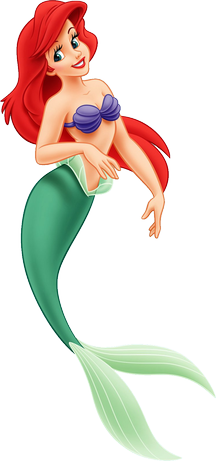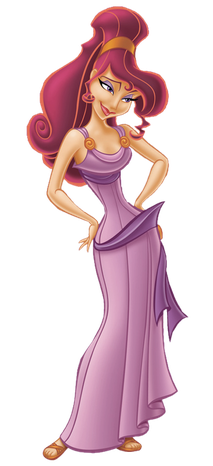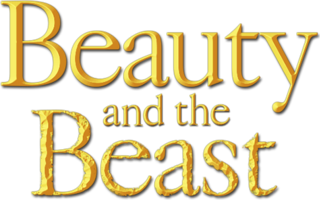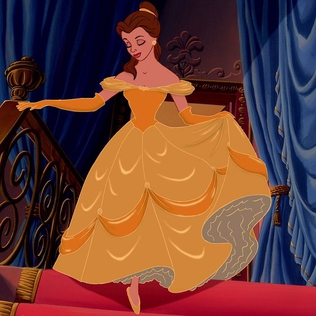
Beauty and the Beast is a 1991 American animated musical romantic fantasy film produced by Walt Disney Feature Animation and released by Walt Disney Pictures. It is based on the 1756 fairy tale of the same name by Jeanne-Marie Leprince de Beaumont, while also containing ideas from the 1946 French film also of the same name directed by Jean Cocteau. The film was directed by Gary Trousdale and Kirk Wise and produced by Don Hahn, from a screenplay by Linda Woolverton.

Paige O'Hara is an American actress, singer, and painter. O'Hara began her career as a Broadway actress in 1983 when she portrayed Ellie May Chipley in the musical Showboat. In 1991, she made her motion picture debut in Disney's Beauty and the Beast, in which she voiced the film's heroine, Belle. Following the critical and commercial success of Beauty and the Beast, O'Hara reprised her role as Belle in the film's two direct-to-video follow-ups, Beauty and the Beast: The Enchanted Christmas (1997) and Belle's Magical World (1998), and for cameo appearances in Ralph Breaks the Internet (2018) and Once Upon a Studio (2023).

Beauty and the Beast is a Disney stage musical with music by Alan Menken, lyrics by Howard Ashman and Tim Rice, and a book by Linda Woolverton. Adapted from Walt Disney Pictures' Academy Award-winning 1991 animated feature musical film of the same name – which in turn had been based on the classic French fairy tale by Jeanne-Marie Leprince de Beaumont – Beauty and the Beast tells the story of an unkind prince who has been magically transformed into an unsightly creature as punishment for his selfish ways. To revert into his true human form, the Beast must learn to love a bright, beautiful young lady who he has imprisoned in his enchanted castle before it is too late.

Jasmine is a fictional character who appears in Walt Disney Pictures' animated film Aladdin (1992). Voiced by Linda Larkin – with a singing voice provided by Lea Salonga – Jasmine is the spirited daughter of the Sultan, who has grown weary of her life of palace confinement. Despite an age-old law stipulating that the princess must marry a prince in time for her upcoming birthday, Jasmine is instead determined to marry someone she loves for who he is as opposed to what he owns. Created by screenwriters and directors Ron Clements and John Musker with co-screenwriters Ted Elliott and Terry Rossio, Jasmine is based on Badroulbadour, a princess who appears in the One Thousand and One Nights folktale "Aladdin and the Magical Lamp."

Nala is a fictional character in Disney's The Lion King film franchise. Introduced in the animated film The Lion King (1994), Nala subsequently appears as a less prominent character in the film's sequels The Lion King II: Simba's Pride (1998) and The Lion King 1½ (2004), and serves as a recurring character in The Lion Guard (2015–2019). In the original animated film trilogy, the adult Nala is voiced by American actress Moira Kelly. Young Nala's speaking voice in the original film is provided by actress Niketa Calame, while singers Laura Williams and Sally Dworsky provide the singing voices of young and adult Nala respectively. Nala is introduced as the daughter of an unnamed lion and Sarafina, the best friend of Simba, and ultimately becomes his wife as well as the daughter-in-law of Mufasa and Sarabi and the niece-in-law of Scar by the end of The Lion King. Nala becomes Simba’s wife as well as his Queen Consort. Nala is also the mother of Kiara and Kion, and in The Lion King: Six New Adventures, she is the mother of Kopa.
"Beauty and the Beast" is a song written by lyricist Howard Ashman and composer Alan Menken for the Disney animated feature film Beauty and the Beast (1991). The film's theme song, the Broadway-inspired ballad was first recorded by British-American actress Angela Lansbury in her role as the voice of the character Mrs. Potts, and essentially describes the relationship between its two main characters Belle and the Beast, specifically how the couple has learned to accept their differences and in turn change each other for the better. Additionally, the song's lyrics imply that the feeling of love is as timeless and ageless as a "tale as old as time". Lansbury's rendition is heard during the famous ballroom sequence between Belle and the Beast, while a shortened chorale version plays in the closing scenes of the film, and the song's motif features frequently in other pieces of Menken's film score. Lansbury was initially hesitant to record "Beauty and the Beast" because she felt that it was not suitable for her aging singing voice, but ultimately completed the song in one take.

Disney Princess, also called the Princess Line, is a media franchise and toy line owned by the Walt Disney Company. Created by Disney Consumer Products chairman Andy Mooney, the franchise features a lineup of female protagonists who have appeared in various Disney franchises.

Ariel is a fictional character in Walt Disney Pictures' animated film The Little Mermaid (1989). Ariel is voiced by Jodi Benson in all official animated appearances. Ariel is the youngest daughter of King Triton and Queen Athena of an underwater kingdom of merfolk called Atlantica. She is often rebellious, and in the first film, she longs to be a part of the human world. She marries Prince Eric, whom she rescued from a shipwreck, and together they have a daughter, Melody. She is the fourth Disney Princess and also the first Disney Princess to be developed during the Disney Renaissance.
Linda Woolverton is an American screenwriter, playwright, and novelist, whose most prominent works include the screenplays and books of several acclaimed Disney films and stage musicals. She is the first woman to have written an animated feature for Disney, Beauty and the Beast (1991), which is also the first animated film ever to be nominated for the Academy Award for Best Picture. She also co-wrote the screenplay of The Lion King (1994), provided additional story material for Mulan (1998), and adapted her own Beauty and the Beast screenplay into the book of the Broadway adaptation of the film, for which she received a Tony Award nomination and won an Olivier Award.
"A Change in Me" is a song written by composer Alan Menken and lyricist Tim Rice for the musical Beauty and the Beast, a stage adaptation of Disney's 1991 animated film of the same name. The song was written specifically for American singer Toni Braxton when she joined the production to play the role of Belle in 1998, four years into the musical's run. Menken and Rice wrote "A Change in Me" to appease Braxton after Rice promised the singer, who was hesitant to sign her contract, that he would write an entirely new song for her to perform in the musical on the condition that she finally agree to play Belle.

Gaston is a fictional character in Walt Disney Pictures' animated film Beauty and the Beast (1991). Voiced by American actor and singer Richard White, Gaston is an arrogant and ruthless hunter whose unrequited feelings for the intellectual Belle drive him to murder his adversary, the Beast, once he realizes she cares for him instead. Gaston serves as a foil personality to the Beast, who was once as vain as Gaston prior to his transformation.

Anya is a character in 20th Century Fox's animated film Anastasia (1997). An eighteen-year-old Russian orphan with amnesia, Anya travels to Paris, France, in hopes of re-discovering her past and family, collaborating with a pair of con artists who scheme to use her likeness to Russia's Imperial family to win a lucrative reward. Although largely fictionalized, the character is loosely based on two historical figures: Grand Duchess Anastasia Nikolaevna of Russia, the youngest daughter of Tsar Nicholas II, and Anna Anderson, an imposter famous for claiming to be the Grand Duchess. Plot elements from the film Anastasia (1956), in which the title character is played by actress Ingrid Bergman, served as a primary source of inspiration for Anya.

Aurora, also known as Sleeping Beauty or Briar Rose, is a fictional character who appears in Walt Disney Productions' animated film Sleeping Beauty (1959). Originally voiced by singer Mary Costa, Aurora is the only child of King Stefan and Queen Leah. An evil fairy named Maleficent seeks revenge for not being invited to Aurora's christening and curses the newborn princess, foretelling that she will prick her finger on a spinning wheel's spindle and die before sunset on her sixteenth birthday. Merryweather, one of the three good fairies, weakened the curse so Aurora would only sleep. Determined to prevent this, three good fairies raise Aurora as a peasant in order to protect her, patiently awaiting her sixteenth birthday — the day the spell can only be broken by a kiss from her true love, Prince Phillip.

Princess Rapunzel is a fictional character who appears in Walt Disney Animation Studios' animated film Tangled (2010). Voiced by American actress and singer Mandy Moore, Rapunzel is a young princess kept unaware of her royal heritage by a vain old woman named Mother Gothel, who raises her in a secluded tower to exploit her hair's healing abilities to remain young and beautiful forever.

Megara, commonly known simply as Meg, is a fictional character who appears in the Walt Disney Pictures animated film Hercules (1997). Voiced by actress Susan Egan, Meg is introduced as a cynical young woman enslaved by Hades, god of the underworld. Hades forces Meg to uncover Hercules' weaknesses by seducing him in return for her freedom, only to develop genuine feelings for the hero instead. Loosely based on Megara and Deianira, Hercules' first and second wives in Greek mythology, directors Ron Clements and John Musker adapted Meg into a morally conflicted con artist, while basing her role and personality on 1940s screwball comediennes, particularly actress Barbara Stanwyck's performance in The Lady Eve (1941).
"Belle" is a song written by composer Alan Menken and lyricist Howard Ashman for Walt Disney Pictures' animated film Beauty and the Beast (1991). Originally recorded by American actress and singer Paige O'Hara and American actor Richard White, "Belle", a mid-tempo French and classical music-inspired song, incorporates both Broadway and musical theatre elements. The film's first song and opening number, "Belle" appears during Beauty and the Beast as a large scale operetta-style production number that introduces the film's heroine Belle, considered a book-loving nonconformist by the townspeople of the village, who has grown weary of the provincial life in which she is supposed to live, and Gaston, the film's narcissistic villain who wishes to desire her hand in marriage despite Belle's repeated rejections.

Beauty and the Beast is a Disney media franchise comprising a film series and additional merchandise. The success of the original 1991 American animated feature, Beauty and the Beast, directed by Gary Trousdale and Kirk Wise, led to three direct-to-video follow-up films, a live-action spin-off television series, a Disney World stage show, a Disney World restaurant, a trackless dark ride, several video games, merchandise, and the 10th longest-running musical in Broadway history, which was nominated for nine Tony Awards, winning for Best Costume Design. In March 2017, Disney released a live-action remake of the film.
"Something There" is a song written by lyricist Howard Ashman and composer Alan Menken for Walt Disney Pictures animated film Beauty and the Beast (1991). Sung by the majority of the film's main cast, the song was recorded by American actors Paige O'Hara as Belle and Robby Benson as the Beast via voice over, featuring actors Jerry Orbach, Angela Lansbury and David Ogden Stiers as Lumiere, Mrs. Potts and Cogsworth, respectively. The only song performed by the Beast, "Something There" is heard midway through Beauty and the Beast during a scene in which Belle and the Beast finally begin to acknowledge their feelings for each other.
Maleficent is a Disney media franchise that began in 2014 with the theatrical release of Maleficent.

In the ballroom scene from Disney's 1991 animated film Beauty and the Beast, during which the fictional character Belle dances with the Beast to the film's titular song, Belle wears an opulent golden off-the-shoulder ball gown with a voluminous skirt. Producer Don Hahn claims the dress was conceived by several intoxicated male filmmakers during production of the film. Although Beauty and the Beast is set in 18th-century France, the dress's streamlined, anachronistic design borrows inspiration from several different fashion eras, with some of its elements centuries removed from its historical setting.



















